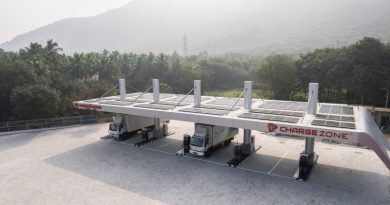What’s next for Light EV charging standards?
Near-term convergence to standardized connectors & protocol
In a positive development for the Indian EV industry, BIS recently approved IS 17017 (Part 2 / Section 7) as the standard for a new AC and DC Combined Charging connector standard for LEVs (light electric vehicles). The accompanying BIS standard IS 17017 (Part 25) specifies the communication protocol for LEV charging. Then, there is also BIS standard IS 17017 (Part 2 / Section 6), a standard for DC fast charging connectors for light electric vehicles.
Fig 1. provides a visualization of the evolution of charging in the context of electric two-wheelers in India. Altogether, convergence towards a few key standards for charging connectors and, perhaps even more critical, a standard communication protocol will open the doors to greater interoperability and investment in EVSE (electric vehicle supply equipment) infrastructure.

Figure 1: Summary of convergence of LEV charging connectors & communication protocol I Image by author
What next?
While the prospect of a more widespread infrastructure of DC fast chargers for electric two and three-wheelers is excellent for boosting consumer confidence in EVs, careful consideration must be made for battery health, protecting against hacking, and user convenience.
Protecting battery health
While standardization drives interoperability and hence greater scope for 3rd party DC fast charger networks, OEMs will still want to ensure that their electric two-wheelers, e.g., can draw power only from reputed DC fast chargers certified to relevant safety and quality standards. This is important because battery health can depend a lot on charging profiles and the quality of power supplied to the vehicle. At the end of the day, it is the OEMs who will need to bear the cost of warranty even if the fault is attributed to the regular use of a spurious, sub-standard DC fast charger.
Resisting malicious attacks
OEMs will be wary of users plugging in their vehicles to a spurious, sub-standard charging point only to find that their vehicle has been hacked or an unauthorized party has accessed sensitive data. The current standards do not fully address the potential risk of hacking. However, as volumes scale up, LEV charging stations & vehicle charging ports will inevitably come on the radar of malicious hackers.
Enhancing user convenience
Today, one of the critical barriers to the adoption of EVs is the cumbersome payment mechanisms associated with chargers. Different CPOs (charge point operators) have different mobile apps and wallets, and ‘roaming’ is usually a challenge, with the user being compelled to register and sign up before being able to pay for charging service at each new charging network. Here, wouldn’t it be great if all the user needed to do was plug in their vehicle to the charging point, and everything else – from authentication to billing to payment- was taken care of by itself?
Key next step in LEV charger evolution – Cybersecurity
As we think about the key considerations discussed in the previous section, a cybersecurity foundation will soon become essential at the hardware level. For instance, a secure element attached to the SECC (EVSE communications controller), as well as the EVCC (EV communications controller), will provide a platform for enabling the exchange of signed certificates that, in turn, can allow plug-and-charge as one possible future extension to IS 17017 (Part 25). Similarly, a secure CAN transceiver will provide resilience to hacking the vehicle and unauthorized communication at spurious charging points.

Figure 2: Cybersecurity- at a core hardware level, is a key next step for building & retaining trust in public charging infrastructure | Image by author
Building the foundation of cybersecurity in EVSE and vehicle hardware today can unlock disproportional value for all stakeholders. OEMs can benefit from checks & balances on which EVSE their vehicles can draw DC fast charge from. Users will benefit from a seamless plug-and-charge experience. The consequent increase in underlying trust & convenience associated with 3rd party charging points will boost consumer adoption of EVs and eventually benefit CPOs as well.
About the author

Narsimh Kamath graduated with a B. Tech in Electronics & Communication Engineering from the National Institute of Technology Karnataka and has 15 years of experience spanning multiple roles across design and applications in the semiconductor industry. He is currently the business development manager – electrification for India, Southeast Asia, and ANZ regions at NXP, a global leader in automotive and industrial semiconductors. He has previously served as lead systems architect on a battery management system solution and holds multiple US patents. Reach him at narsimh.kamath@nxp.com.
Also Read: Smart BMS for a post-subsidy world | Flexibility is key
Subscribe & Stay Informed
Subscribe today for free and stay on top of latest developments in EV domain.







Pingback: Electronic design aspects of electric vehicle charging equipment • EVreporter